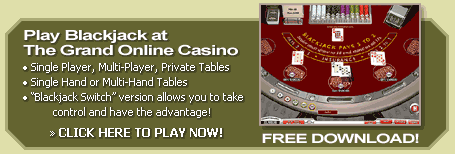Basic Strategy vs Card Counting There are two main types of blackjack strategies; the first used by most non-professional blackjack players is basic blackjack strategy. The second is card counting which is used by most professional players. In card counting, the player keeps track of how many high cards remain in the deck. The theory behind card counting is that high cards are good for the player. Although high cards are also good for the house, mathematical formulas and computer models have shown that players that use card counting systems can actually gain an advantage over the casino. Playing blackjack professionally can be a grind as card-counting players must wade through hundreds and possibly thousands of hands before the odds actually turn in their favor. The professional player that is card counting must also be careful as all casinos employ counter measures to short circuit a players run that is card counting. Basic blackjack strategy makes much more sense for the recreational blackjack player. While the casual player doesn’t play to lose, they also do not want to feel like they are studying when trying to enjoy a visit to a casino. The key to basic blackjack strategy is to stick with it; a basic blackjack strategy player cannot not go with a “feeling”; or feel like “taking a shot”. To be successful at basic blackjack strategy, you have to play it faithfully and approach the game confident that your basic blackjack strategy will be successful. Downfall of most recreational players is when they misplay hands. Standing on a hard 12 against a dealer’s upcard of Seven to Ace will cost players as much as 25 percent of the hands. While hitting a hard 15 against a dealer’s Five or Six upcard coasts just as much. Doubling down on a hard eight against a dealer’s Seven through Ace is a common mistake, costing between 25 percent and 60 percent of the player’s bets. But a blackjack player who doesn’t double down on a hard ten or 11 costs himself over 30 percent of his money. Splitting cards is often an overlooked aspect of basic blackjack strategy. Players who neglect the split can give away between 16 percent and 50 percent depending upon the dealer’s upcard. But if you ever try to split Tens at a blackjack table, it won’t be long before you’re playing alone. Other players know that it is one of the worst moves and the facts back them up. By splitting Tens you are basically giving away more than 50 percent of your bets, depending on the dealer’s upcard. Even against the Five or Six, the worst upcards for the dealer, splitting tens will cost you nearly 20 percent. The lesson is that basic strategy has been proven to be the optimal blackjack strategy for recreational players. It provides the best chance to beat the casino. Resources: Double Down Chart | Hit and Stand Chart | Splitting Pairs Chart |



